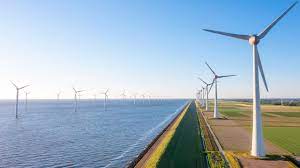- Dear Dr. Massmann, a government official recently stated that the MoIT probably had enough solar projects in the pipeline, explaining for that fact that such new FIT will be much more lower than the current one (as quoted by Mr. Nguyen Ninh Hai, Deputy Director of New and Renewable Energy Department, MOIT), do you agree with this statement and why? Is there any other reason that you think make sense for planning a new upcoming FiT for solar?
OM: The number of approved solar projects has gone far beyond the target capacity in the National Power Master Plan VII (as amended). The Government has to issue a new national power master plan (PDP VIII) to reflect the new target following the market status. In addition, the grid does not have enough capacity to absorb all output from solar projects at the moment and has to be upgraded. This process should take around 1-5 years. The current FiT is also very attractive to foreign investors and high compared to some other countries. For these reasons, the Government has to issue a new FIT to slow down the development of solar projects, thus having time to improve the grid and complete the legal framework.
- With the market now anticipating the new FiT for solar, which is underway, what is the current situation of those solar projects seeking to be the last one to enjoy the 9.35 US cents feed in tariff? Do you think the anticipation for the new FiT has triggered/ or will trigger a rise in deal value for renewables in Vietnam in the meantime? Perhaps in Ninh Thuan province? If so, by roughly how much %?
OM: Solar projects seeking to be the last one to enjoy the current FIT now have to accelerate their development process so that they will come into commercial operation by 30 June 2019. If they cannot (and this is the current situation of many solar projects), the investors tend to delay the construction and wait to see what will happen after 30 June. I am aware that the new FIT is only one of the options, besides auction or a hybrid option. The Government has not yet decided on the final model. Ninh Thuan is already overloaded and investors should look for opportunities in other provinces.
3. Besides the new FiT, what changes would you like to see in the new PPA for projects coming into operation after 30 June 2019? Can you rank these changes from most needed, needed to have, and good to have for the long-term outlook of M&A deals in renewables? Can you briefly explain the reasons for the ranking as well?
OM: The bankability of the PPA is of utmost importance. Without this, the investors find it very hard obtaining financing for their projects. Another change I expect is a clear indication of whether the PPA is a take-or-pay agreement. This will help investors secure and ensure the profits and revenue of their projects. The last change but also of not less importance is a dispute resolution clause which provides international arbitration to be an option to resolve the dispute. This could be a great concern for foreign investors, especially those of large utility scale projects.
4. From talking to a market source, the current FiT rate for wind energy projects is profitable enough for investors and he himself as an investor doesn’t want the FiT rate for wind energy projects to go up any more. What would be your argument for the hike in wind FiT and how would it benefit the long-term outlook of M&A deals in wind energy projects?
OM: I believe the reason for a recent increase in the wind FiT is to improve profitability of the projects, help investors to recover the investment capital more quickly and arrange a better financing deal with the banks. I note that the PPA is only for 20 years, so if it takes too long to recover the capital, together with the high maintenance cost after that, the investors will no longer be interested in keeping the projects. The new wind FIT will make wind projects more attractive to investors for acquisitions as there is still room for further development after the projects have recovered their investment capital.
Please do not hesitate to contact Dr. Oliver Massmann under [email protected] if you have any questions or want to know more details on the above. Dr. Oliver Massmann is the General Director of Duane Morris Vietnam LLC.



